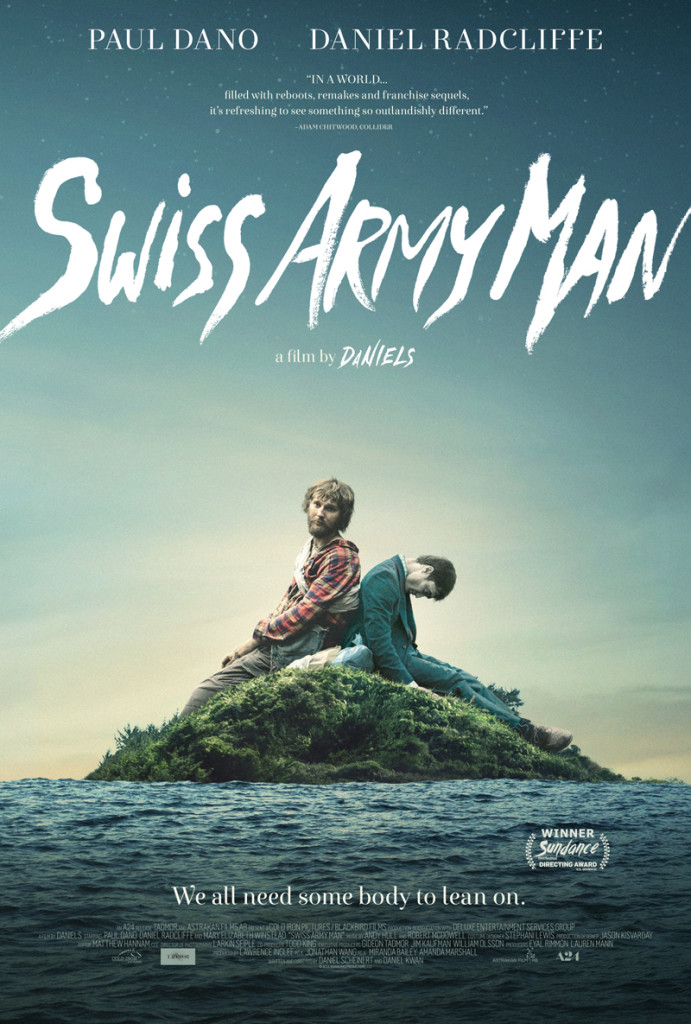THE WINNER OF WEEK 6 HAS BEEN LISTED BELOW
The Scriptshadow Tournament pits 40 amateur screenplays against each other that you, the readers of the site, will vote on. Ultimately, YOU will decide the winner. Today we have the sixth group of entries. You can see who won Week One here, who won Week Two here, who won Week Three here, who won Week Four here, and finally, who won last week. Read as much as you can from each of the entries and vote for the week’s winner in the comments section. Although it’s not required, your vote will carry more weight if you explain why you chose the script (doesn’t have to be elaborate, just has to make sense). I say “carry more weight” because a vote for a script without any explanation from an unknown voter may be seen as fake and not count towards the tally. I will announce the winner of this week here, in this post, on Sunday, 10pm Pacific time. That script will then go into the quarterfinals. Good luck.
Title: Corpse Flower
Writer: Michael J. Kospiah
Genre: Horror
Logline: After a brutal home invasion, a psychotic mother must go head-to-head with a sadistic plastic surgeon to save her abducted little girl — a little girl who isn’t as innocent as she seems.
Title: BLOOD RED, SILVER SCREEN
Writer: Andrew Sieger
Genre: Horror
Logline: When independent filmmaker, William Roman, gets the opportunity of a lifetime to direct a movie for a big time Hollywood studio, he jeopardizes his career and maybe his life when he casts a real Vampire in his Vampire movie.
Title: Gods of Rock
Writer: Sean Woolford
Genre: Dramatic Comedy
Logline: After faking their death to get out of a bad management deal, a KISS-type rock band resurfaces 19 years later as their own tribute band.
Title: Jump
Writer: Andrew Bumstead
Genre: Thriller
Logline: After losing their loved ones in a terrorist accident ten years ago, three strangers get the chance to rewrite history by transferring their minds back in time to that fateful day.
WINNER OF WEEK 6: “JUMP” by Andrew Bumstead. Great job, Andrew! And congrats to Alison, as well, who got herself a producer connection off of Log. And a special thanks to Scott’s tireless work on tallying up the votes. Now we even get QUOTE-VOTES, which was really fun to see (not that I expect you to keep that up, Scott. But it was definitely fun)! Have had a great time doing this guys. Can’t wait to see what emerges next week!
1) You’re not writing enough – There are two reasons writers don’t write. One, we don’t have enough time. Two, we construct a false reality to make us believe we don’t have enough time. In my experience, the majority of writers fall into the second category. You need to be writing – AT MINIMUM – 2 hours a day if you want to compete with the big dogs. A lot of professional writers tell me that 3 hours a day is the magic number. And then you get the workhorses who can go 4, 5, and 6 hours. Wherever you’re at, sit down and find a way to carve out more time during the week to write. Oh, and get the Self-Control App! It will block you out of Reddit, Pornhub, ESPN and all the other sites for a defined period of time so you can focus on writing!
2) You still haven’t gotten your fundamentals down yet – Throwing caution to the wind and seeing where your story takes you is a fun endeavor, but until you learn the 3-act structure, what character flaws are, how to arc characters, how to build suspense, how to avoid on-the-nose dialogue, and all the other basics, you’re basically kidding yourself. Your scripts may feel great to you and your undiscerning eye. But to the people in this business who read hundreds of scripts, these glorified writing exercises feel like practice runs. Even if we see the potential in you, we know you have a long way to go. Read all the books and all the blogs on how to write a screenplay. You can’t choose to ignore a rule unless you know it. Trust me. We know when you don’t know it.
3) You don’t read enough screenplays or watch enough movies/TV shows – Guys, you have to read scripts. One of the things I’m most embarrassed about is how many bad screenplays I wrote before reading a single script. Had I just read, say, 50 scripts, I would’ve avoided the dozens of mistakes I made time and time again in each script. Reading is one of the quickest ways to learn the craft. Also, make sure you’re watching all the latest films and TV shows. Not just as entertainment, but with a critical eye. I can’t tell you how many times I’ve heard a screenwriter say, “I don’t even go to the movies,” as if it’s a badge of honor. Um, THIS IS YOUR JOB. You need to watch and study as many movies as you can.
4) You’re not sharing your work enough – I was doing a consultation with a writer the other day and we were discussing his script. He wanted to kill a certain character off. I explained to him that doing so would be a cataclysmic mistake. That character was the heart and soul of the movie and if he killed him, the audience would never forgive him. The writer took a minute and replied, “You know what? You’re right. I never realized how important this character was to the story.” Staying in your own head only gets you so far. To unlock the potential of your script, you need feedback. You need to talk about it to other people. If you can afford me, hire me. If you can’t, find people on this board to share your work with. Or join one of many writers’ groups. Or start your own. I promise you that if you don’t bounce your script off others, it’s never going to become great.
5) You’re not exploring every avenue – Tell me if this story sounds familiar. A writer scores a lucky connection to a producer in LA. The two chat over e-mail and the producer says, “Sure, send me your script when it’s ready.” The writer pours every ounce of his soul into his script for months, putting everything on this one singular connection with this one producer. He finally sends it to the producer, who reads it, and then reports back. “It was okay. But not quite what we’re looking for.” The devastated writer heads to the liquor store, blows their paycheck on an obscure Japanese bottle of whiskey, gets drunk, goes into a three month tailspin where they question their purpose on this planet, and ultimately decide that Hollywood is a place for hacks where nepotism reins supreme and therefore they’re done with screenwriting. — I want to make something clear to you guys: HOLLYWOOD IS THE CAPITAL OF ‘NO.’ “No” is normal. The biggest screenwriting names in the game get told “no” all the time. The only way to thrive in this business is to blanket it – is to create so many opportunities that, sooner or later, amongst that sea of nos, a yes arrives. And you do that by, yes, taking advantage of that producer contact, but also entering as many contests as you can afford, sending your scripts to the Black List site, trying to get featured on this site, engaging in as many writers’ groups as you can. Since “no” is the norm, you need to endure a lot of them to find your “yes.”
6) You’re not using every screenplay to improve – Every screenplay is an opportunity for you to improve as a screenwriter. While some of that will happen naturally, the bulk of it should come via a plan. Try and nail a certain part of the craft in every script. It might be learning how to write sympathetic characters. It might be integrating conflict into every scene. It might be showing and not telling. It might be arcing characters. If you’re just mindlessly bumbling through every screenplay, you’re not improving as a screenwriter.
7) You believe either concept or execution is the end-all-be-all – It’s true: Hollywood is a concept-driven business. But if you think you can come up with a slick idea and paint-by-numbers your way through the execution, think again. Especially in this day and age, where scripts need to blow people out of the water to put writers on the map. Conversely, if you think the concept doesn’t matter and only focus on characters and execution, nobody will read it. To get noticed, YOU MUST DO BOTH.
8) You’re writing outside one of the six Hollywood-friendly genres – Say it with me now. Thriller. Sci-fi. Horror. Action. Adventure. Comedy. These are the genres Hollywood best knows how to market. Therefore, these are the bags they’ll be choosing their treats from. That doesn’t mean you can’t play with these genres, push them, explore fresh avenues within them. But you’d rather be writing in these genres than westerns and dramas and period pieces, as it’s much harder to get those movies off the ground.
9) You’re writing writer-director fare even though you’re not a director – Swiss Army Man. Amazing movie. Inglorious Basterds. Lost in Translation. Mud. Tree of Life. If you’re writing structure-less character pieces with vague plots that focus on feelings and music – that’s fine. But don’t expect anyone to buy those scripts. Why? Because those scripts only work if the writer is also the director. When it comes to the screenwriting side of things, Hollywood wants to see that you can craft a story with compelling characters inside of a fresh marketable concept. That’s the skill Hollywood pays money for.
10) You’re not taking enough chances in your writing – Someone pointed out the other day in the comments section that the writers of Swiss Army Man throw a bunch of bad ideas onto a bulletin board then select the bad ideas that can actually work and mix them together. I’m not sure I’d go that far. But you should develop your own process for taking chances in your writing. As I said above, I want you to learn the proper way to write a screenplay. But once you do, make sure to bend it and twist it and test it in unique ways. If you follow everything to a “T” so that it’s “perfectly executed,” it will almost always end up boring.
Welcome, my friends, to the best movie of the year!
Genre: Drama
Premise: When a suicidal man on a deserted island finds a corpse, he realizes he can manipulate it like a swiss army knife, allowing him to save himself as well as the corpse.
About: Writer-directors Dan Kwan and Daniel Scheinert have become rockstars of the short film and video world. You can see a sampling of their short film work here and here you can see the video (over half a billion hits) that launched them into the stratosphere. Swiss Army Man is their first feature. And if you go by reactions at Sundance, it either killed or killed any future chance of these two making movies.
Writers: Dan Kwan and Daniel Scheinert
Details: 97 minutes
I know this film has been out for awhile now. But I just saw it the other day and I think it’s the best movie of the year.
The hardest thing to do in this town is take risks. The studios are set up in such a way so that at every step of the process, there’s a formula for avoiding risk.
So when anyone goes against that grain, even if I hate the result, I have mad respect for them. Because I know how heavily geared the system is towards making sure these movies never get made.
While I was curious about Swiss Army Man (a best-friends-forever farting corpse movie?), deep down I expected it to be a disaster (a best-friends-forever farting corpse movie???). I knew the directors were talented. I knew they’d made some of the best short films of the decade.
But this was the feature world, where you can’t hide behind great cinematography, weird ideas, and clever special effects. You need an actual screenplay. And if we’re being honest, that’s where I expected them to implode.
But oh how they did not implode. Somehow, these short-movie-mavens made the feature format work for them.
For those unfamiliar with the film, it follows Hank, a young man whose boat sank in the middle of the ocean. Hank was able to make it to a deserted island, but has since grown suicidal due to extreme lonliness.
Luckily, right before he’s about to kill himself, he discovers a corpse washed up onshore. This is Manny. Or, was Manny. Or, is Manny. You see, Manny can actually speak. He’s dead, but the gases in his body allow him to operate on a primitive level.
I know, I know. Sounds ridiculous right? Believe me, part of watching this movie is saying time after time, “This shouldn’t be working but somehow it is.”
Hank uses Manny’s gaseous power (read: ability to fart) as an engine, riding Manny off the island to a new body of land, which is adjacent to a forest. Hank and Manny must traverse the forest to find civilization, but soon realize they’re lost.
So they hunker down and we follow their burgeoning friendship. Hank uses Manny’s strange powers to help them survive, and teaches Manny, whose death has affected his memory, all about life again.
The central storyline follows Hank teaching Manny about love, to the point where he dresses up as a woman and plays the part daily. This results in a pseudo-romance slash bromance of the likes you’ve never seen before. And yes, as crazy as this all sounds, IT SOMEHOW FUCKING WORKS.
So what can we learn about a movie where farting becomes the emotional climax? (no, I’m serious. Farting is the emotional climax. And it will leave you in tears)
Swiss Army Man takes the “Questions” approach to storytelling, which, while not as powerful as goal-oriented storytelling, works well when you’re dealing with character pieces (as long as you execute).
The driving question behind Swiss Army Man is “Will Hank and Manny end up together?” This is placed in doubt by the fact that Manny is dead. And there’s no guarantee he’ll live through all of this.
In addition to this, we’re constantly wondering if Manny is even animated. Has Hank constructed Manny’s animation in order to cope with his loneliness out in the middle of nowhere? Could Hank just be playing with a dead lifeless corpse this whole time?
As long as you can ask questions that the audience wants answer to, they will keep watching. And we want to know the answer to these questions.
Another huge part of the movie is Hank trying to teach Manny what love is. So that’s a third question that’s pushing us forward. While this seems like the least interesting of the three questions, it actually ends up being the strongest because the writers put so much emphasis on the storyline.
The fact that Hank is dressing up as a woman to help this dead soul understand love again ends up being an incredibly powerful choice.
Finally, the Daniels (our writer-directors) DO end up adding a goal – that of a girl Hank is in love with. We don’t know the exact nature of their relationship. But we sense she may be an ex-girlfriend or possibly even a current girlfriend. It’s this girl that drives Hank to find civilization again.
Of course, because nothing of what you see in Swiss Army Man is expected, the reality of this woman turns out to be completely different from the fantasy.
I HATE highlighting things in movies that don’t have to do with screenwriting because it doesn’t help you guys become better screenwriters.
But I have to point out that Swiss Army Man is part musical, as these two are constantly humming songs that add to their growing friendship. And this soundtrack isn’t just good. It’s amazing. The best soundtrack I’ve heard in years. No doubt this was an essential component to the movie being amazing.
Also, while I know the Academy will never reward a farting-corpse movie, I believe that Daniel Radcliffe deserves an Oscar for this role. The fact that he makes you fall in love with a farting corpse says everything. And it should also be an important reminder to writers everywhere to KEEP WRITING INTERESTING CHARACTERS that actors would want to play.
As an actor, you are never ever going to get a chance to play a character like this again in your life. And these are the kinds of things actors look for when they’re picking projects.
This movie will not be for everyone. Believe me. I fully expect some of you to tell me I’m crazy. But I’m sorry. This movie showed me that cinema hasn’t run out of ideas after all.
[ ] What the hell did I just read?
[ ] wasn’t for me
[ ] worth the read
[ ] impressive
[x] genius
What I learned: In character-driven scripts without goals (or with weak goals), make sure the story-driving questions are as strong as you can make them. They will determine whether we want to keep reading or not.
Genre: Drama/Thriller
Premise: An Air Force pilot who’s been forced into retirement hijacks an F-15 for a joyride that may be his last.
About: We’re going back to the past today. This script sold in the 80s and some thought it to be on the fast track to a green light. It went so far as attaching Bruce Willis when he was the biggest movie star in the world. What happened next depends on who you talk to, but apparently studio politics got involved. Publisher Howard Meibach, an authority on script sales at the time, had some interesting things to say about why scripts do or don’t get made which still seems applicable today. The biggest screenplay killer comes “when one studio head goes out and a new one comes in. They always want to wipe the slate clean.” Also, a lot of great material gets lost “when production companies go under.” Icarus is a script, Miebach said, that even 21 years after he read it, still stays with him. Wow, might this be a diamond in the forgotten rough?
Writer: Patrick Sheane Duncan (based on the original screenplay by Robert Stitzel)
Details: 134 pages – 198? draft
A strange anomaly in cinema history is Top Gun. That movie came out, became a monster hit, made every 12 year old in the country want to be a fighter pilot. You would’ve thought we’d be seeing a new fighter pilot movie every five years.
And yet here we are, 30 years later, and we have what? Stealth? Flyboys? Red Tails?
I’m not sure why this sub-genre went extinct, but I always perk up when I see a fighter pilot script. “Could this be the one to bring the genre back?” I wonder.
And I like when someone takes a genre that’s traditionally one way and explores it a different way. A fighter pilot script that’s actually a character piece? Hmmmm…. That could be good.
50-something fighter pilot Albert Fiske is given the notice by his commander, General Benjamin Holbart, that he will not be getting promoted. That means that, because of his age, Fiske will be relived of his Air Force flying duties.
Fiske doesn’t have a family. He doesn’t have kids. All he has is his plane. So when no one’s looking, he jumps in that thing, takes off, and starts flying along the West Coast.
Holbart notifies Fiske’s best friend and fellow pilot, Colonel Jerry Gill, that his buddy’s gone rogue, and gives him a chance to talk his buddy down so they don’t have to send the calvary after him. The problem is, nobody can find Fiske. He and his plane have disappeared!
At this point, we jump back in time 20 years, to when Holbart, Fiske, and Gill were all young pilots, and all in love with the same girl, a young nurse named Bobbie. Holbart had her first, then Fiske snatched her away. But it turns out, Bobbie was in love with Gill all along, and married him.
Back in the present, Fiske takes joyriding to a whole new level, screeching across the desert, just 10 feet above the sand. If this is the last day he gets to fly, he’s going to get every last thrill out of it. Meanwhile, Gill is finally able to reach him via radio, and make a plea for Fiske to come back.
What follows is a multiple-cutting narrative that jumps between the present, the Academy, the Vietnam War, and the months before Fiske was fired, painting a complicated 4-way friendship that has led Fiske to this flight. Will they be able to talk him back down? Or will they have to take him down?
Stakes.
These days, a script can’t get through the system without having high stakes. Things have to MATTER. If they don’t matter, we don’t care. Every script in the studio system goes through numerous meetings where people ask, “What are the stakes?” and “Can they be higher?”
But when you write a character piece, injecting stakes into your story becomes tougher. You don’t have the world to blow up. You don’t even have a city to demolish. The stakes have to be character-driven, just like the story.
And here’s where a lot of writers screw up. They think that because they’re writing about character, they can somehow soften the stakes. The thinking seems to be people = feelings = stakes aren’t important. And actually, it’s the opposite. It’s because the story is so much smaller that the stakes matter more.
So I look at Icarus and I ask, what are the stakes? A suicidal older pilot might kill himself?
There are a couple of problems with this. For one, it’s not nearly as easy to root for someone trying to kill themselves as someone who’s trying to save themselves. If they want to live, we’ll want them to live. If they want to die, we don’t necessarily want them to die, but we’re kind of like, “Okay, well, if he dies, he gets what he wants. So what’s so bad about that?”
The other problem is Fiske isn’t putting anyone in danger. He’s off flying around the desert, over the ocean, high up in the stratosphere. Literally NOBODY is going to get hurt by this guy’s antics.
I was hoping the flashbacks would provide the kind of insight into the friend dynamic that, even if the exterior stakes were weak, the character stakes could be high. And they seemed to be on the right track when we find out that Fiske was in love with Holbart’s girlfriend, Bobbie. This would explain why Holbart didn’t promote Fiske, choosing to put him out to pasture instead.
But then the writers make the strange choice of having the third friend, Gill, get the girl. At that point I was like, “Whaaaaaa??” To me, this script gets so much better if you make Holbart a bona fide villain, someone who hates Fiske and is set on getting his revenge for his “friend” stealing his girl 20 years ago. So why pass that storyline off to a third party? It was strange.
I’ll tell you where I would’ve liked to see this go. Start off playing nice with Fiske. They tell him, “You bring the plane back, everything will be fine.” Fiske disobeys, and so they get serious, sending a couple of planes up to scare him. Fiske shakes them, and that’s when the problem gets kicked over Holbart’s head.
A higher ranking official comes down and tells them to blast Fiske out of the sky. You could then decide how far you’d want to take it. Maybe Fiske totally loses it and gets in legitimate firefights with pursuers. Maybe he gets in a final one-on-one duel with either Holbart or Gill.
But I think you see where I’m going. Something has to happen here. Something where more lives are at stake. It can’t just be a dude in a cockpit feeling sorry for himself with the occasional flashback.
It was fun reading this though. I’ve noticed there’s a lost art in screenwriting. That of the “macho line.” It used to be in every script. They’d have 10-50 lines of guys saying the most macho “gotcha” things to one another. Here’s one from Icarus: “Albert, you’re in shit so deep you won’t be able to walk out of it on stilts.” And we got this one earlier: “You’re dick’s too short to fuck God.”
There was a time when I thought you weren’t a real screenwriter until you could write one of those lines. So I would try to write them all the time. It didn’t even matter the genre. Horror movie. Romantic Comedy.
The thing is, I could never write a good one. And after awhile, I realized why.
It was because there was no truth to the lines. Nobody ever says those things outside of movies. And in the 80s, when every movie was packed with larger-than-life characters who didn’t talk like real people, lines like that made sense. But over time, as we’ve moved towards a more “realistic” form of dialogue-writing, a lot of those lines have disappeared. Still, I thought it was interesting.
I was rooting for Icarus but I think it gets lost in its desire to be character-driven, to the point where it avoids the kind of stakes a movie like this needs.
Script link: Icarus
[ ] What the hell did I just read?
[x] wasn’t for me
[ ] worth the read
[ ] impressive
[ ] genius
What I learned: Small premises need small page counts. A guy goes up in a plane for his last joyride? That doesn’t need 135 pages.
THE WINNER OF WEEK 5 HAS BEEN LISTED BELOW
The Scriptshadow Tournament pits 40 amateur screenplays against each other that you, the readers of the site, will vote on. Ultimately, YOU will decide the winner. Today we have the fifth group of entries. You can see who won Week One here, who won Week Two here, who won Week Three here, and who won last week here. Read as much as you can from each of the entries and vote for the week’s winner in the comments section. Although it’s not required, your vote will carry more weight if you explain why you chose the script (doesn’t have to be elaborate, just has to make sense). I say “carry more weight” because a vote for a script without any explanation from an unknown voter may be seen as fake and not count towards the tally. I will announce the winner of this week here, in this post, on Sunday, 10pm Pacific time. That script will then go into the quarterfinals. Good luck. There are some extremely tough competitors this week.
Title: Log
Writer: Alison Parker
Genre: Horror Comedy
LOGline: A weekend of debauchery turns to terror for a group of friends staying at an old lumberjack camp when a bloodthirsty log springs to life and embarks on a murderous rampage.
Title: Something True for Those Skyscraper Hearts
Writer: J Aaron Aragon
Genre: Fantasy
Logline: When a talented musician finds himself on the wrong side of life he must discover if anything is stronger than death – and if anything is more important than family.
Title: The High Hard One
Writer: David Martin
Genre: sports drama
Logline: An angry young bowling prodigy from the trailer parks of Seattle competes in a tournament for a chance at the pro tour, and faces off against his estranged father – a famous ex-pro attempting to mount a comeback.
Title: Untitled Breaking Up Parents Marriage Comedy
Writer: Anonymous
Genre: Comedy
Logline: Convinced that his constantly feuding parents are headed for a divorce, a 14 year old sets out to find new lovers for his mom and dad in hopes of ending their marriage.
Title: Return to Flight
Writer: Chad Rouch
Genre: Drama
Logline: Richard Covey, the pilot for the next mission after the Challenger disaster, must battle his growing paranoia about the safety of the shuttle program if America is to return to space. Based on a true story.
WINNER OF WEEK 5: “LOG” by Alison Parker. Congrats, Alison! May you give future generations many many log nightmares. And nice job holding off the untitled marriage comedy. I have a feeling that had that script had a title, it may have been an even tighter race. But alas, we’ll never know! See ya back here next week where I expect the competition to be just as tight!






